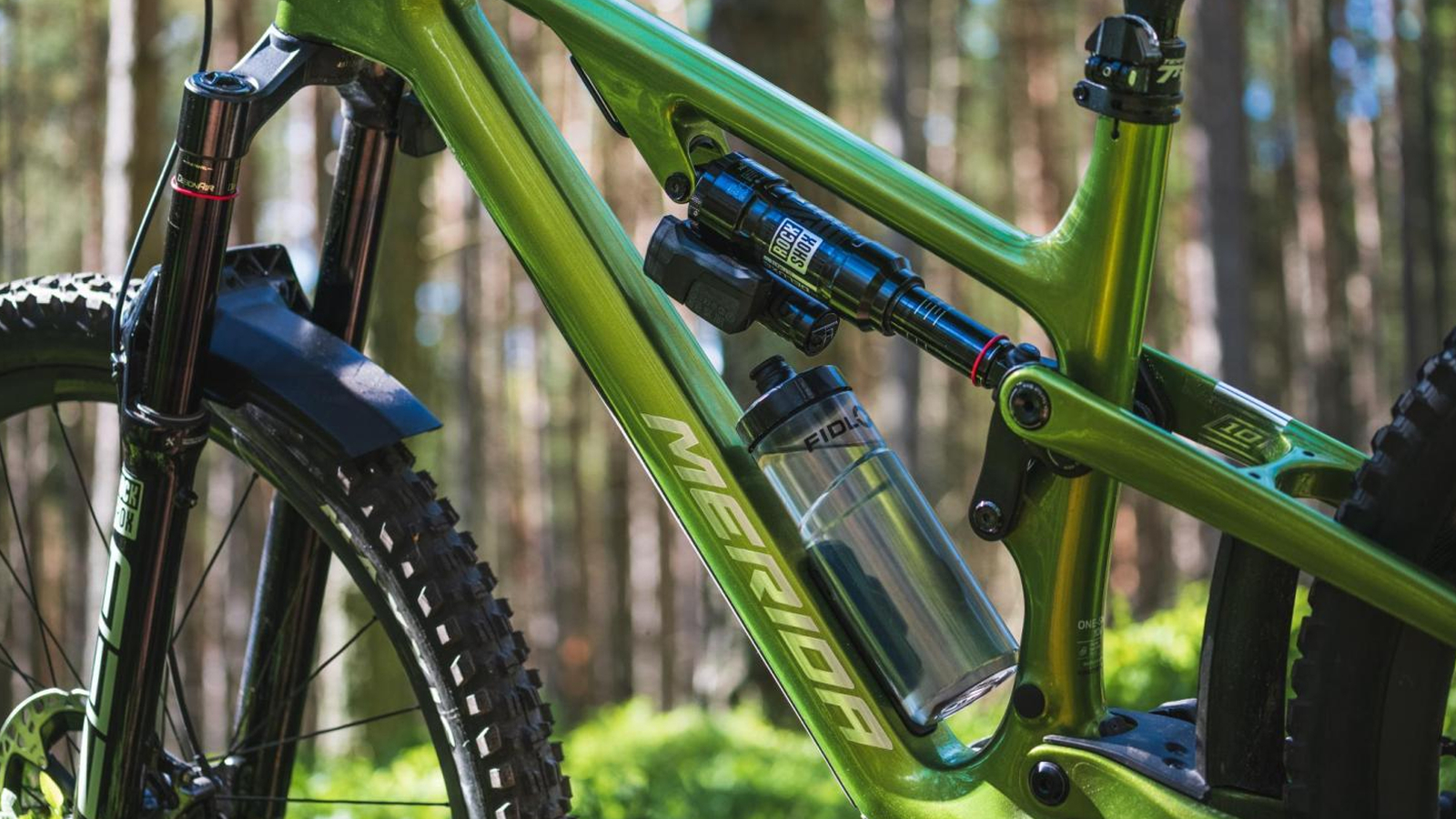Merida's One-Forty and One-Sixty bikes receive a radical redesign
A long overdue update to Merida's trail and enduro bike brings with it new geometry, suspension system, and loads of neat details

Merida has given its One-Forty and One-Sixty mountain bikes a dramatic overhaul, the redesign brings the brand's trail and enduro mountain bikes platform up to date with much-needed updates to the geometry and suspension, and are packed with extra features.
Interestingly, although the bikes are aimed at different types of riding with the longer travel One-Sixty targeting the best enduro bike market and the One-Forty focused on all-mountain, both bikes use the same main triangle. Both bikes come in carbon and alloy options.


Although the two bikes travel differs, 143mm for the One-Forty and 162mm for the One-Sixty incase you want to know the exact millimeters of suspension on offer, there are more common features shared between the two platforms.
Both bikes come with a mixed wheel 'mullet set-up' on the smaller sizes and full 29ers on the bigger ones. Every size is able to run a 27.5 or 29-inch wheel in the rear though and, thanks to a flip-chip in the rocker, different rear wheel sizes won't affect the geometry of the bike. While mullet is pretty common on enduro bikes, it's still something that's rarely seen on the best trail bikes that the One-Forty will be competing with.
We got some time on the One-Sixty before it's official launch. For more on that, check out our Merida One-Sixty 8000 first ride review.

Merida has developed a new suspension system that uses a ‘P-Flex’ pivotless rear end that we have previously ridden on the Merida Ninety-Six cross-country bike. While flex stays are common on the top flight cross-country bikes, they are rarely used on trail and enduro bikes.
The P-Flex suspension replaces the rearmost seat stay pivot and is featured on both the carbon and alloy frames. The two frames were produced side by side and Merida says the alloy version offers the same performance, just at a lower price point and with a little extra weight. The weight difference between the two frames is quoted at 200g, which could make the alloy version the smart rider's choice.
Merida has also introduced what it calls FAST suspension kinematics delivers more wheel rate progression as you move to bigger frame sizes. This should give smaller, lighter riders and larger riders a more uniform suspension experience. The smallest sizes have six percent progression which increases to 14 percent in the biggest frame size, this is measured from the neutral 30 percent sag position up to 95 percent of your travel. Both bikes are also approved to be used with air and coil shocks.

Merida has brought the One-Forty and One-Sixty up-to-date geometry wise too, with some big updates to the angles. The new One-Forty trail bike is now longer, slacker, and lower than the outgoing One-Sixty, featuring a 65-degree head angle, an 80-degree seat angle, and a roomy 480mm reach for a size medium. As the One-Sixty uses the same frame but has a slacker 64-degree head, it means the 79-degree seat angle is a little slacker and 470mm reach is 10mm shorter than the One-Forty.
Merida has also introduced a new sizing method with the aim to give more flexibility to riders. Merida's 'Agilometer' sizing system essentially has a target rider height and then lets you choose whether you wish to size up or down based on the preferred riding characteristic, agile, balanced, or stable. We have seen other brands use this fluid sizing structure, most notably Specialized's S-Sizing method.

Merida's bikes of late have been packed with extra design features and these new bikes are not different. There's a specific tube mounting point in the frame and Fidlock has been called upon for attaching a bottle. The carbon models also get internal frame storage, which is accessed from the bottom of the downtube.
A special headset routes the cables into the frame below the stem to tidy the cockpit and there is an interesting dropper fitted too. The Merida Team TR dropper has a party trick that we haven't seen on a dropper before. With no disassembly the dropper can be adjusted between 30mm and 230mm in length so riders can fine-tune saddle height without losing maximum saddle drop, something which Merida says is a key part of the new Agilometer sizing system.
Availability and pricing
Full availability is still to be confirmed, in the UK, there will be a limited number of One-Sixty models and sizes available from the start of October, with a fuller range of One-Sixty and One-Forty bikes available in 2023.
The One-Forty range will consist of three carbon models and three alloy models with prices starting at £2,250 / €2,750 and maxing out at £8,000 / €10,650. The One-Sixty has three carbon versions and two alloy framed bikes with prices starting at £2,750 / €3,350 for the cheapest 500 model and going up to £9,000 / €11,900 for the range topping 10k. US prices are currently TBC.

Graham Cottingham joined the BikePerfect team as our senior tech writer in 2020. With over 20 years of riding experience, he has dabbled in downhill, enduro, and gravel racing. Not afraid of a challenge, Graham has embraced bikepacking over the last few years and likes nothing more than strapping some bags to his bike and covering big miles to explore Scotland's wildernesses. When he isn’t shredding the gnar in the Tweed Valley, sleeping in bushes, or tinkering with bikes, he is writing tech reviews for BikePerfect.
Rides: Cotic SolarisMax, Stooge MK4, 24 Bicycles Le Toy 3, Surly Steamroller
Height: 177cm
Weight: 71kg
